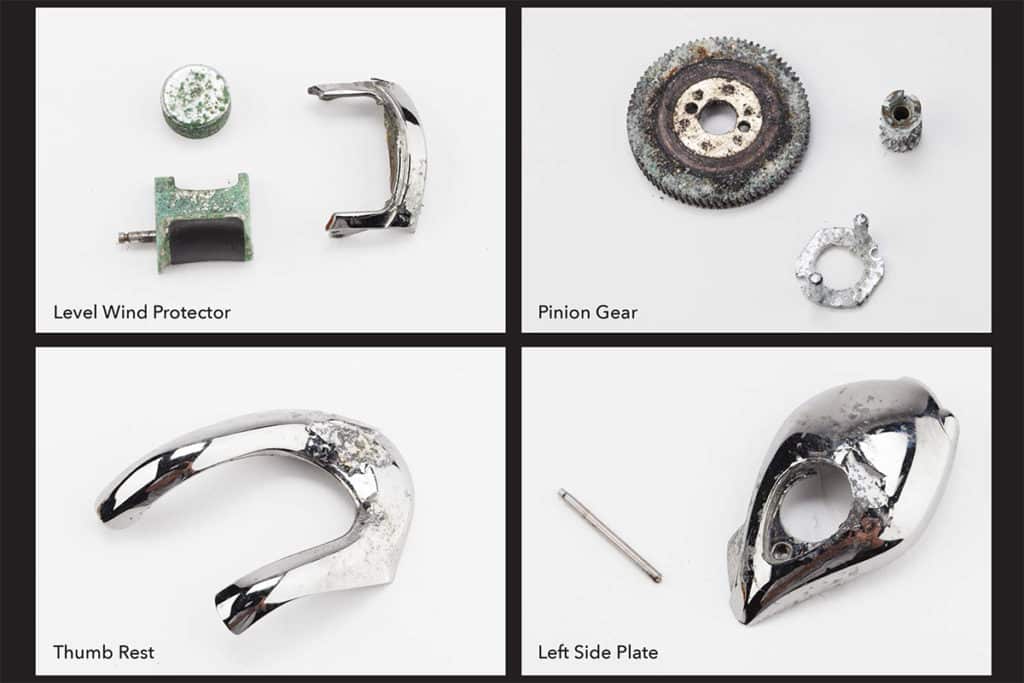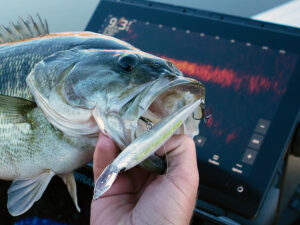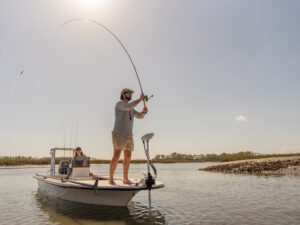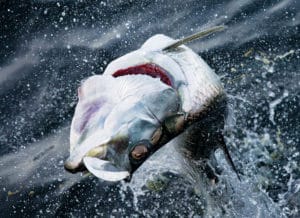Salt-Free Diet
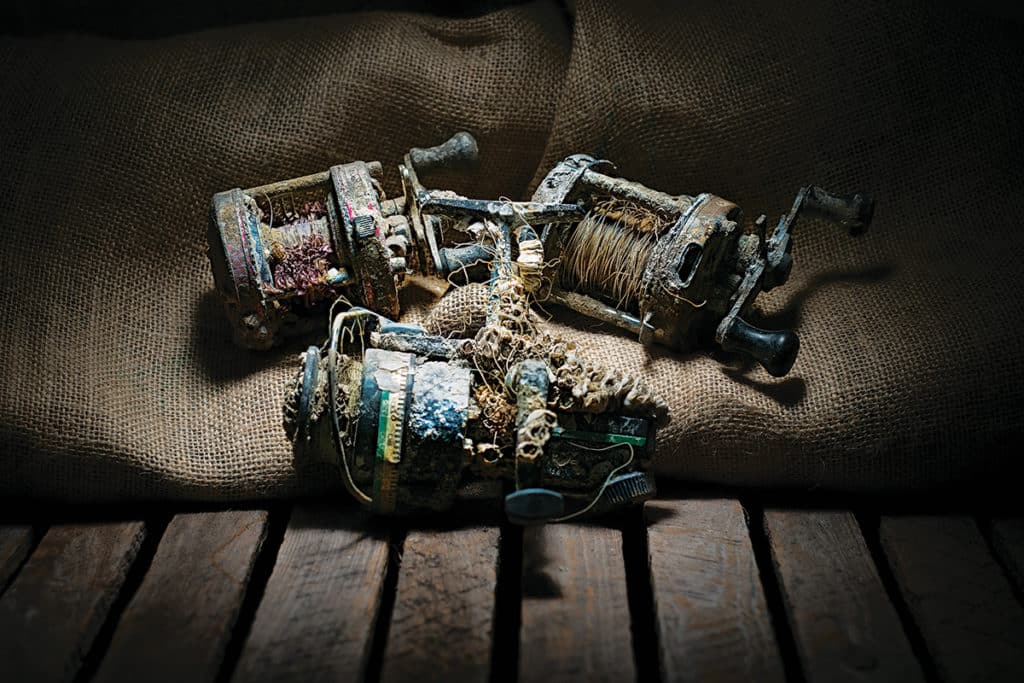
Salt water infects the vital workings of reels like a disease. Countless opportunities exist to catch the affliction. If saltwater exposure remains unchecked, a reel faces a short life span. That’s why manufacturers continue to innovate and incorporate new technologies in their designs. Thankfully, most of today’s saltwater-tough reels feature sealed internal workings, anodized metals such as aluminum, and additional coatings to block and protect against salt.
Zebco Brands’ SaltGuard and Shimano’s E.I. corrosion treatments fill porous metals with a specialized corrosion-preventing compound to seal the reel’s surface. Okuma’s corrosion-resistant coating process incorporates a bath of CorrosionX HD formula for both internal and external metal parts.
“The formula penetrates and bonds to metal parts, which dramatically prolongs the life of those parts beyond anodizing,” says John Bretza, director of product development at Okuma Fishing.
Shimano put a major emphasis on corrosion resistance with its latest Torium star-drag reels. “E.I. surface treatment doubles the durability of the spool surface and helps prevent wear-out by eliminating oxidation,” says Shimano’s John Mazurkiewicz.
In this Gear Guide, I’ve highlighted vulnerable areas of reels and explained how specific companies protect them from saltwater degradation.
The Right Material
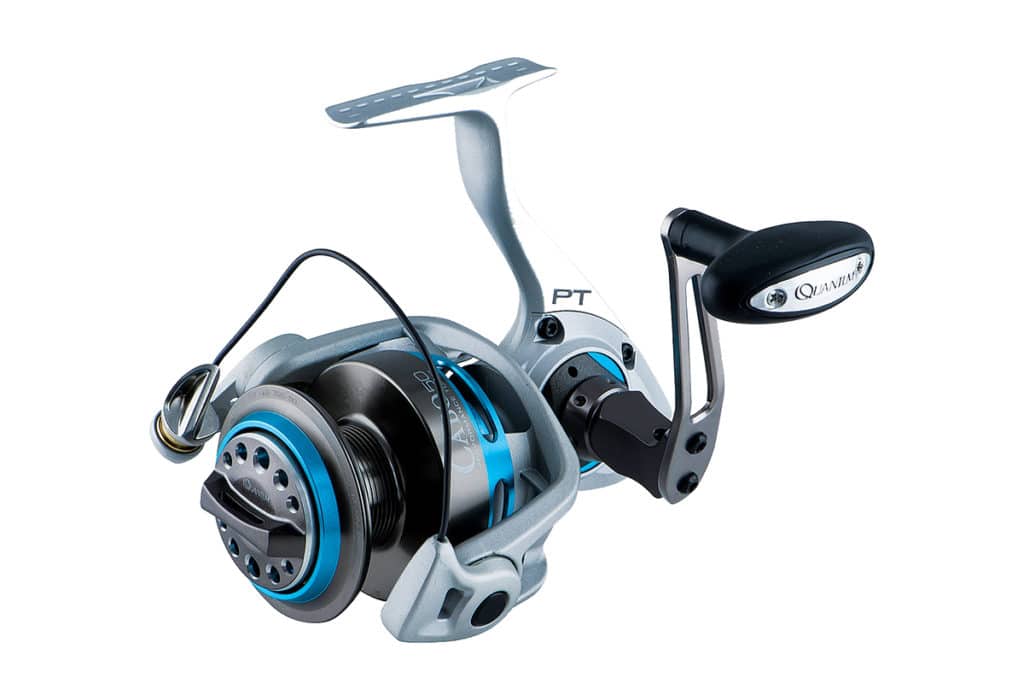
Corrosion resistance starts with a strong foundation. Two popular classes of aluminum alloy are commonly used.
“Wrought alloys are manipulated mechanically into a desired form, such as bar or plate stock,” says Chris Littau, manager of product and technology strategy at Zebco. “Cast alloys are directly cast into their final form by methods such as die-casting.”
Metals are specifically combined with other metals to achieve the desired physical properties, including strength, rigidity and corrosion resistance. For example, Alutecnos constructs its reels from tough 6082 aluminum alloy yet still incorporates an anodizing process to reduce pitting caused by salt water, says Mason Featherston, Alutecnos’ national sales manager.
Consider the positives and negatives of each class of alloys.
Wrought alloys can be precision-machined, strong and corrosion-resistant, as well as incorporate an anodizing layer for more protection. “[Anodizing] is used in the Fin-Nor Santiago, Fin-Nor Marquesa and Van Staal reels,” says Littau.
Cast alloys can be molded into intricate shapes, making them a top choice for high-end reels that are not fully machined.
The basic wrought- and cast-alloy principles also apply to other materials. Stainless steel contains a high level of chromium to prevent rust and corrosion, says Littau. Both aluminum and stainless steel receive secondary processes to perform at their best.
“Aluminum alloys need one of two processes: an immersion bath or anodizing,” he adds. “Anodizing is an electrochemical process that converts the surface of aluminum into a durable anodic oxide finish.
A Better Design
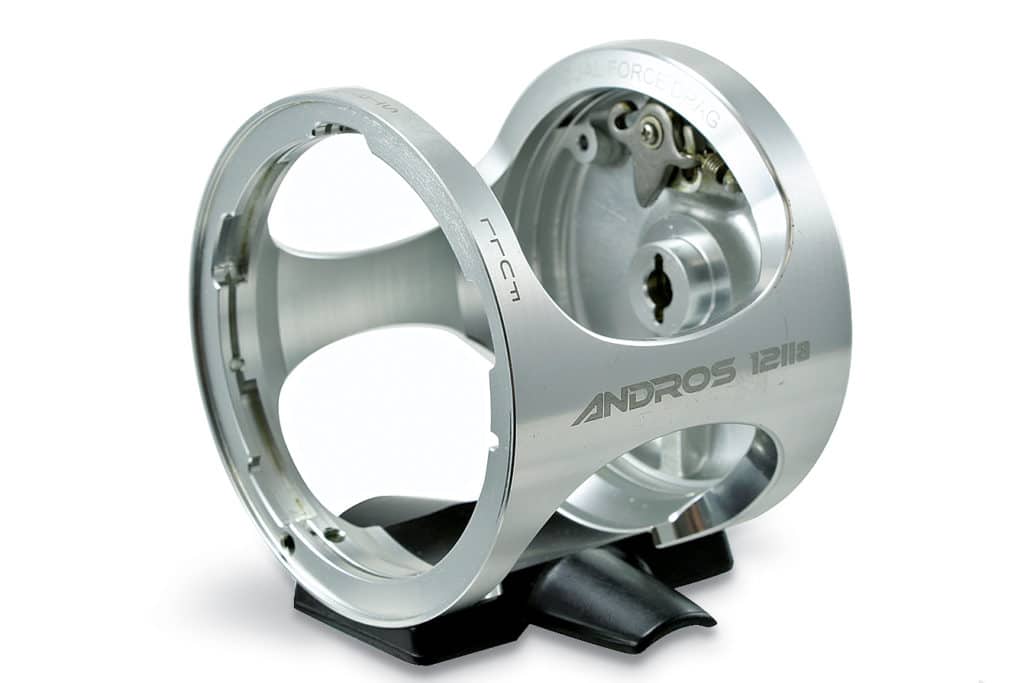
One of the key ways to lessen corrosion, especially on the reel’s exterior, is to control electrolysis. Electrolysis is an electrical current caused by dissimilar metals when salt water is introduced. Different metals are necessary for strength purposes, but reducing the number is still an important factor.
Some manufacturers, such as Okuma, design reel models specifically to reduce corrosion caused by electrolysis. Aluminum and stainless are dissimilar metals and can lead to corrosion if not properly maintained.
“All Andros reels have a one-piece frame and palm side plate, meaning on a right-hand-crank reel, there are no side-plate screws on the left side,” explains Bretza. “The goal is to reduce the possibility of corrosion. The right-side plate has four major keys machined into the frame and twists into place for maximum holding power. A set screw holds everything in the locking position.”
Sealed Tight
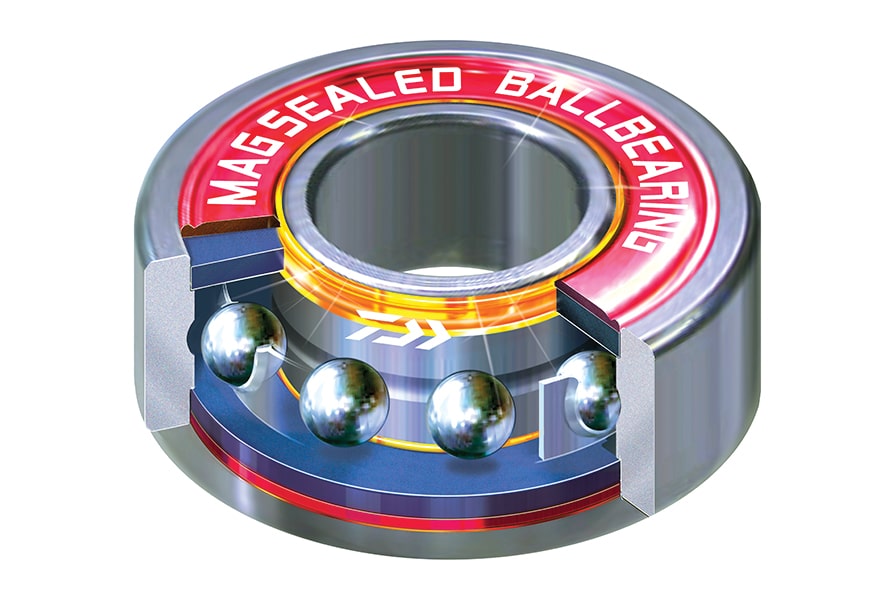
Different manufacturers protect internal ball bearings and gears from saltwater intrusion differently. Shimano incorporates shielded anti-rust ball bearings into reels such as the new Curado 70 baitcaster. The unique bearings are 10 times more corrosion‑resistant than standard stainless steel.
Most companies seal bearings and interior surfaces to prevent water intrusion. Accurate seals bearings and coats all interior surfaces, including the bearing faces, says Ben Secrest, vice president of marketing at Accurate.
“The gear box has so many tight-tolerance areas that any salt or sand can create problems,” says Mike Rice, brand director at Pure Fishing, which makes Penn reels. “Once salt water gets into the anti-reverse bearings or ball bearings and dries out, you end up with a rough and noisy reel. If salt residue and sand work their way into a drag system, you lose consistency and smoothness.”
Penn’s Battle II reels use sealed ball bearings in addition to the seal on the drag system. At this summer’s ICAST show, the brand-new Slammer III will debut, featuring IPX6, a waterproof rating that signifies protection from heavy splashing and water jets.
“The Spinfisher V and Torque reels have a very extensive sealing system around the gear box and drag system,” says Rice. “We wanted them both to be surf-ready reels out of the box.”
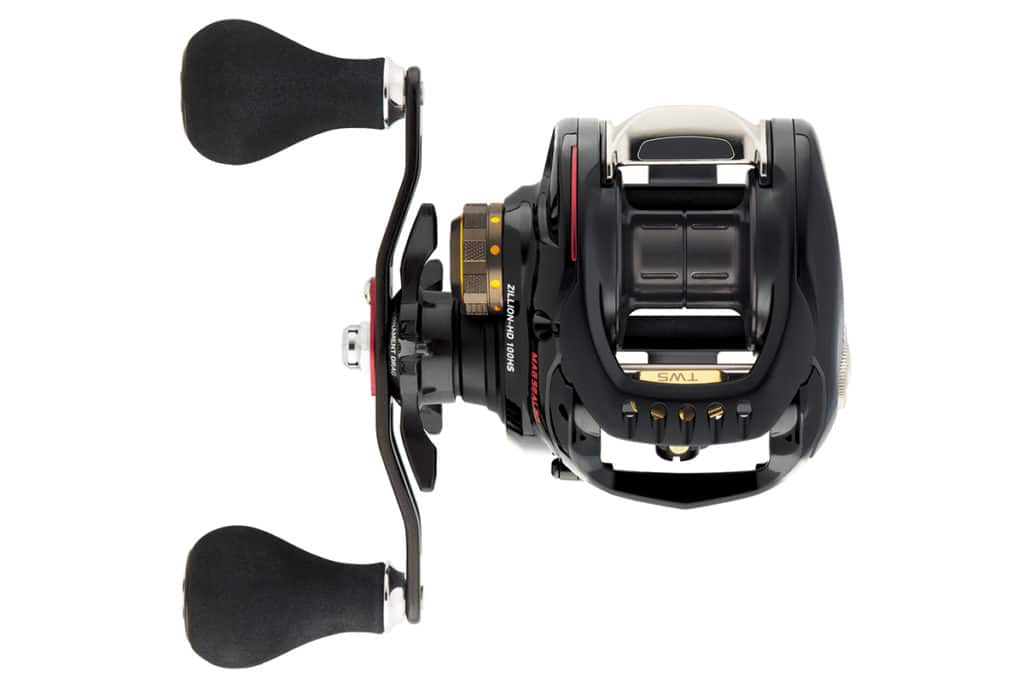
Daiwa’s Mag Sealed ball bearings use a patented magnetic oil to span the gap between the bearing’s outer and inner races. The oil belongs to a new generation of nanofluids that can change density and shape.
Mag Sealed creates an excellent low‑friction seal for a rotating shaft on a spinning reel. Daiwa currently utilizes the magnetic oil and Mag Sealed technology at the rotor, line roller, ball bearings and gearing of specific spinning, baitcasting and power-assist models.
Daiwa’s Zillion HD baitcaster comes with a Mag Sealed ball bearing. The Saltiga- and Dog Fight-series spinning reels have three Mag Sealed ball bearings and waterproof bodies. The new lightweight Exist spinner features Mag Sealed ball bearings on both sides of the drive gear, plus a Mag Sealed main shaft and line roller.
“This frictionless dam allows the bearings to perform optimally in any conditions,” says Daiwa’s Curt Arakawa.
Van Staal reels are so utterly and completely sealed that they can be dunked underwater without saltwater intrusion. “In order to be 100 percent waterproof, everything must be sealed,” says Littau. “Van Staal also uses ceramic bearings that don’t corrode.”
With these corrosion protections plus consistent maintenance in the form of light rinses and proper lubrication, today’s reels should experience an extended life span even in the harsh saltwater environment.
